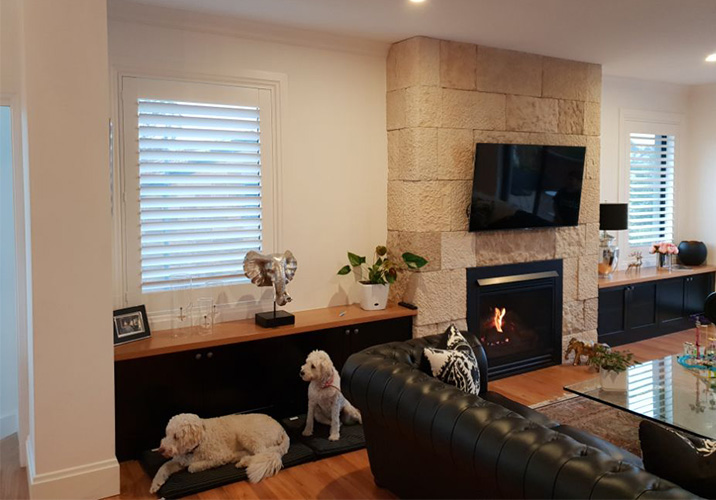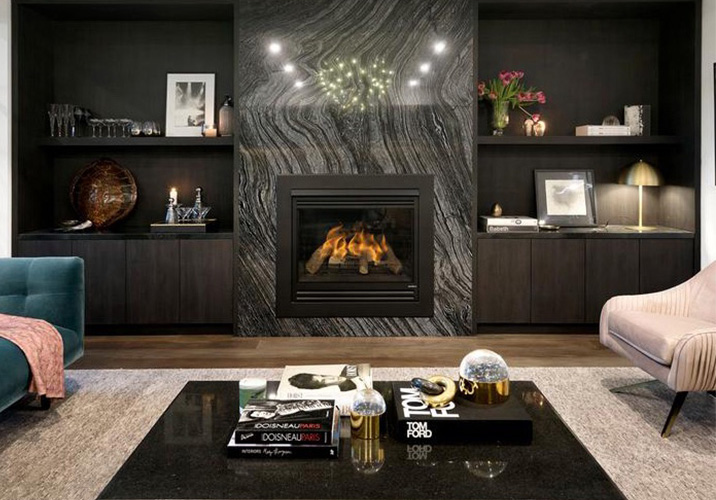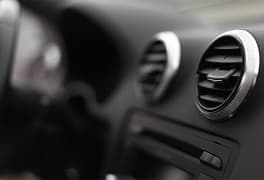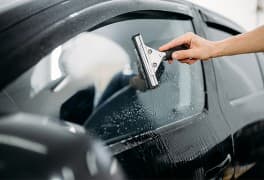
Find a local builder
- Inspiration /
- Indoor projects /
- Heating & cooling /
- A guide to fireplaces
A guide to fireplaces
The different types available, plus how to clean yours
Different types of fireplaces
Very little can compare to the comforting feeling a warm, crackling fire can evoke. Innovations in design and technology are making it possible for almost anyone to enjoy this feeling regardless of how their home is designed. When there is such a wide variety of options made available, it can cause confusion when trying to determine which is the best option.
When choosing a fireplace, a key element to keep in mind is the various fuels options. Some of these include traditional fuels, but newer products have become more efficient and, in the long term, are better for the environment. The most popular options include:
- Wood: A traditional option that is low in cost, but not as efficient in producing heat as other materials
- Gas: This is an efficient option that is low in cost overall, but needs proper ventilation
- Electric: There are no emissions from using this method, but it can be more expensive
- Coal: This option creates a warm glow, but it is not clean-burning and requires ongoing maintenance.
- Bio-ethanol: This is a newer option that is more eco-friendly than others because it is clean-burning.

What fireplace styles can I choose from?
Fireplace designs vary greatly. Depending on the space available and your budget you may be interested in some of the following styles:
- Hearth-style wood burning fireplaces that require full chimneys
- Inserts that are designed to fit into gas or wood burning openings
- Tabletop fireplaces as decorative pieces
- Corner units
- Pillar flame style units
- Free-standing fireplaces
- Wall-mounted fireplace displays
- Four-sided glass fireplaces (designed to appear as a floating fireplace)
Gas fireplaces
Gas fireplaces are easy to use, you don’t have to gather wood to get the fire started to use one, and are surprisingly warm. There are a variety of gas fireplaces on the market in different sizes and designs to accommodate various tastes and needs, including a double-sided fireplace that can be installed to heat two rooms at once. Some gas fireplaces also allow for a wall switch or handheld remote system to control your heat, as well as timers to set it on and off automatically.
Gas fireplaces have several safety features. The ceramic glass viewing panels can withstand the high temperature of the fire and prevent burning embers from escaping the fireplace.. Gas fireplaces also have built-in safety mechanisms that protect against flame failure and oxygen depletion.
It is important to note that the installation of a fireplace requires a licenced gas plumber.
Electric fireplaces
Electric fireplaces are one of the easiest types to operate – you simply need to flick a switch to turn it on, and then your home is filled with the crisp sounds of a crackling fire. Just install a power source near the fireplace’s location, which you can have completed by a trained professional in order to guarantee your safety and ensure proper wiring. Customers typically purchase this type of fireplace for its ambiance, as opposed to its heating ability. However, modern units can heat entire rooms much better than the early electric fireplaces of old.
Similar to gas fireplaces, electric units deliver the traditional wood burning pit for a realistic feel. Also, electric models have large viewing areas so residents can view the fire from anywhere in plain sight. Since they run on electricity, they can be expensive depending on where you live. No fumes or carbon dioxide are released into the air, so no ventilation is required. Therefore, the electric fireplace is a much safer option than gas. This also allows for much more flexibility as to the installation location of the fireplace.
Ethanol fireplaces
Ethanol fireplaces are essentially those that use denatured ethanol for fuel. This denatured ethanol is produced via renewable agricultural sources, making it environmentally-friendly. The fireplaces are excellent for both outdoor and indoor locations, and they don’t need venting since steam, water, carbon dioxide and heat are their only by-products.
One of the reasons ethanol fireplaces are becoming so popular is because they don’t require a chimney or flue. They can simply be positioned where you want: anywhere on the floor, on a table, in a decorative fireplace, or fixed to the wall. They are beautiful to look at, partly due to the natural looking flame, but also because they can be found in a huge variety of attractive designs. Usually, they are formed from steel and glass, which looks amazing and has several uses.
Contact local builders
Cleaning a fireplace
It’s important to clean your fireplace regularly, especially if you use it frequently. Cleaning isn’t just cosmetic; it can help improve your fireplace’s safety. You should hire an expert to clean your chimney and flue, but you should be able to do the rest yourself. Here is how to clean a fireplace.
Step 1: Do a safety check
It’s important to inspect your fireplace for safety on a semi-regular basis. Hire a professional to inspect your fireplace or follow Step 5 below. Inspect the fireplace before you purchase your home and two to four times a year after the initial safety check. Make your safety check the first step in your semi-annual cleaning routine.
Step 2: Gather supplies
You’ll need to protect your eyes by wearing goggles and may need to wear a mask to avoid breathing in soot. You should also get rubber gloves, a stiff nylon scrubbing brush and a plastic drop cloth. Check these supplies and replace as needed before a cleaning.
Step 3: Clean the firebox and fire screen
The firebox is made of a combination of firebrick and sheets of metal. To scrub firebox walls, use the brush with stiff bristles. Be careful not to use too much pressure, as doing so may cause the firebrick to crumble and break. Put ashes in a bag or vacuum them.
Examine your firescreen to determine how to best clean it. Brass-plated firescreens require brass cleaner; painted metal screen can be cleaned with a solution of 4 ounces of vinegar, 3.7 litres of warm water and 5 millilitres of ammonia. Wipe down the screen with a cloth dipped in the cleaner, then wipe it again with plain water.

Step 4: Clean glass enclosures
Glass fireplace enclosures are made from tempered glass; they must be cleaned after every few uses to remove any residual soot. If soot gets cake onto the glass, gently scrape it with a glass scraper, being careful to avoid scratching it. Use the same vinegar and ammonia solution you use on metal firescreens to clean off stains on the glass.
Step 5: Inspect the chimney & fireplace
Once you are done cleaning, you’ll want to inspect the chimney properly. First, spread a drop cloth over the firebox and slide on your back into the fireplace. Shine a flashlight up the flue to search for cracks in the masonry. Be sure to also check for accumulated creosote by going up to the roof and looking down the chimney. This is also a good way to check for any other problems that may not be visible from below.
Step 6: Maintain your fireplace between cleanings
Vacuum or dust the hearth area every week to prevent soot and creosote from building up. Also, only clean the hearth after embers have cooled down. Be sure not to use any kind of abrasive cleaner in the fireplace; these are flammable and may leave residue behind.
Related posts
How much will your job cost?
The Oneflare Cost Guide Centre is your one-stop shop to help you set your budget; from smaller tasks to larger projects.



